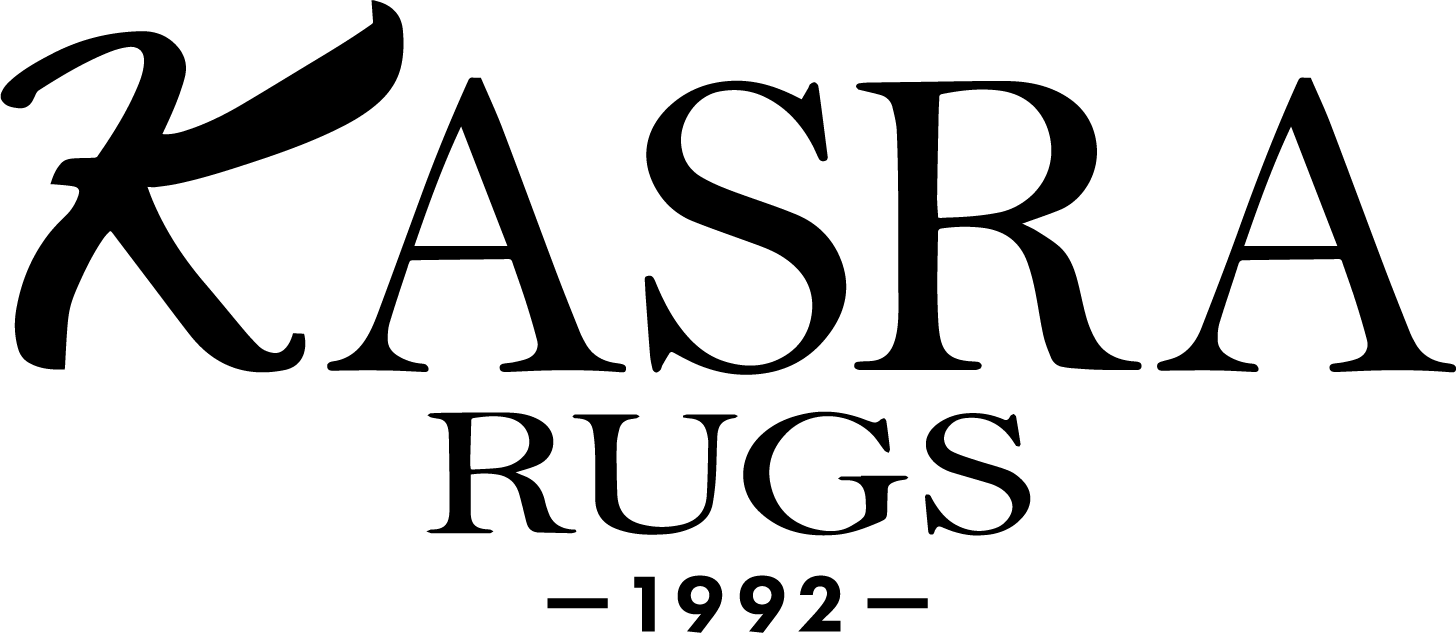From the Loom to Your Room – How Rugs are Woven
t can take months and in some cases even years to make a good hand woven rug. Rug weaving is a difficult craft, requiring dedication and close attention to detail. There are many steps involved in the rug making process, which we will outline below.
Before the weaving process begins, the necessary materials must first be gathered. Proper preparation and grade in materials can make all the difference in a rug’s quality, so care and time are taken.
The most common materials used in handwoven rugs are wool, cotton, silk and jute. These materials are used in various combinations but the most common is a wool pile woven onto a cotton foundation. Good quality wool comes from well-cared-for sheep. These sheep typically live in higher, cooler regions and thus grow a full fleece. Believe it or not, the age and diet of the sheep, as well as the climate in which they were raised, all factor into the overall quality of the wool. The finest and most expensive type of wool is kurk, which is shorn from the chest and shoulders of lambs. The next step is to wash the freshly sheared wool. From there, the wool is combed, sorted and then spun by hand.
Pattern planning and wool dyeing.
Most hand-woven rugs are crafted with a pre-planned pattern. This pattern maps out where each knot should be as well as what colour it should be. Typically, patterns are sketched out on graph paper or written out in detailed instructions. Following the pattern, the weaver selects the appropriate wool from among the various balls of yarn that hang on the loom.
Once planned, the yarn must be dyed.
This part of the process is regarded as a science and requires a high level of skill and experience. Generally, most weavers don’t dye their own yarn. Rather, this is reserved for the carpet-dyers, who have mastered the process. The carpet-dyer will have a good selection of natural dye-stuffs. The yarn remains in a natural dye-bath for many hours and sometimes even days.
The first step in the weaving process is to string the loom, which is the frame that holds the rug together while it is being woven. There are two types of looms which are used for weaving Persian and oriental rugs; one is vertical and the other is horizontal. Typically, looms are upright and are firmly held by pegs driven into the ground. These two vertical posts are connected to two strong cross beams, making a sturdy frame. The two cross beams are adjustable in order to accommodate weaving of rugs in different sizes. You can learn more about the different types of looms by reading our post The Loom.
Once the loom is strung, the weaving process finally begins. Most rugs are either “knotted” or flat woven”. Knotted rugs are tied, one knot at a time, building slowly from the bottom of the loom toward the top. The weaver ties rows of knots across the whole rug, forming the pile, also called the nap (surface of the rug). Next, the weaver will insert several horizontal weft threads, pushed firmly onto the woven part of the rug. The number of weft threads determine the quality of the rug’s foundation. A fresh row of knots is then tied and the same process is continued until the rug has been completed. Flat woven rugs don’t have knots at all. Rather their pattern is created by the wefting.
The final step is to wash the rug. This step will bring out the luster of the rug, as well as eliminate any dust and small debris that were gathered during the weaving process. Once all of these steps are done, the rug is finished and ready to take to market.




